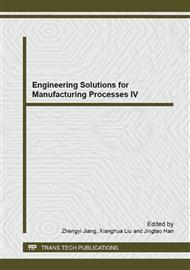p.1069
p.1073
p.1078
p.1085
p.1089
p.1093
p.1099
p.1103
p.1107
A New Enhancement Model Combined Anisotropic Diffusion and Shock Filter
Abstract:
A novel model which is about the image denoising and enhancement is proposed in this article, the image denoising and enhancement increasingly becomes a bottleneck restricting the follow-up image of a series of processing On the basis of anisotropic diffusion model, an edge stopping function is introduced, which can make up the drawback that solely relies on detecting the gradient information to control the diffusion process .Using the edge stopping function position accurately on the edge so as to achieve the purpose of the noise reduction fully in the non-edge zone, but it inevitably will blur the edge information. Therefore, the further use of the shock filter in the edge enhancement is essential. Experiments show that the model can well remove the image noise and achieve good visual effect.
Info:
Periodical:
Pages:
1089-1092
Citation:
Online since:
February 2014
Authors:
Price:
Сopyright:
© 2014 Trans Tech Publications Ltd. All Rights Reserved
Share:
Citation:


